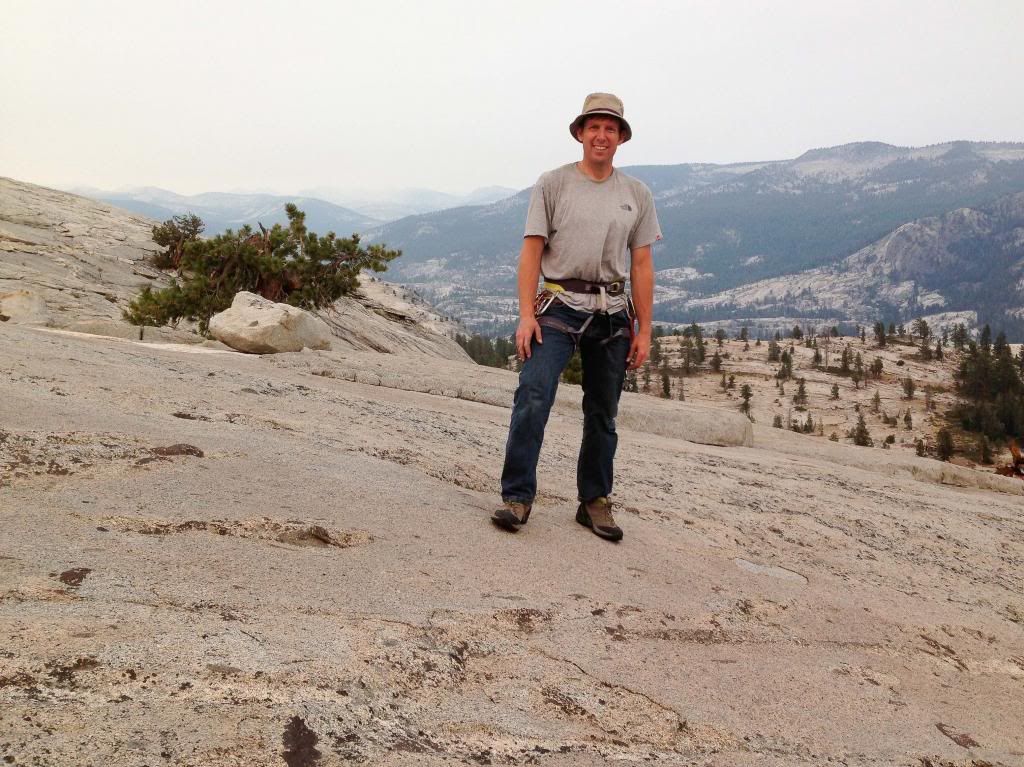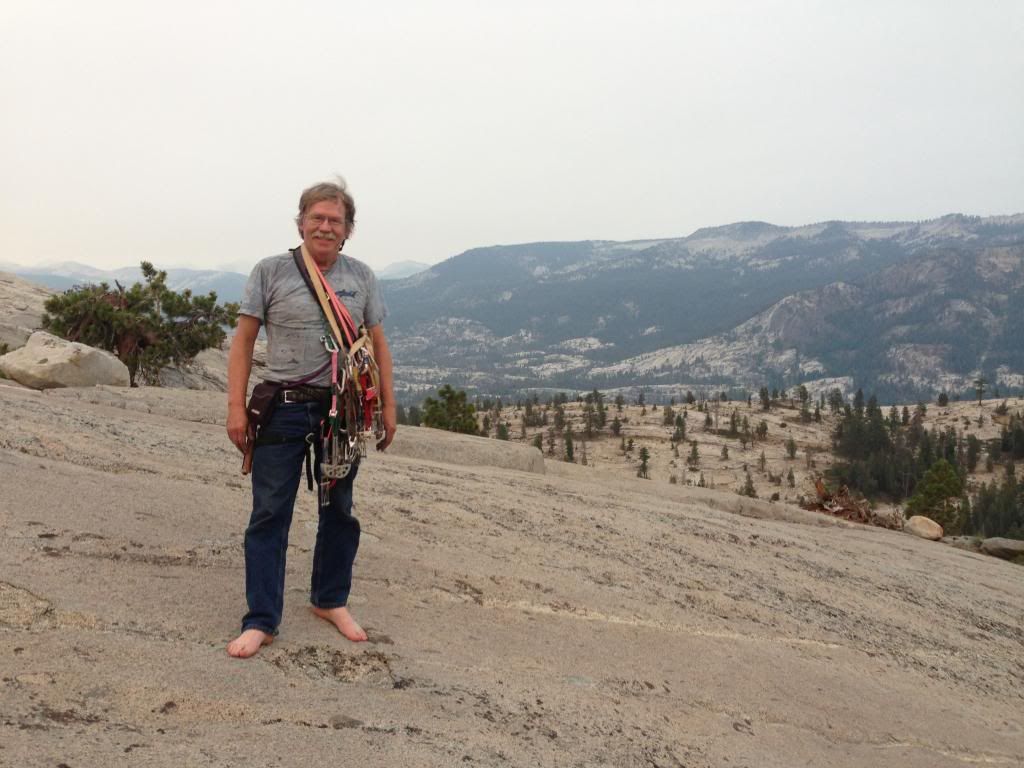Two Climbs of a Power Dome Route, once in 1982 and again in 2013. Solar Energy.
Few routes had been done since I had brought Al Swanson out to show him Courtright Reservoir and climb Helm’s Deep. It was 1982 and Gerri Dayharsh and I strolled leisurely around the back side of Power Dome.
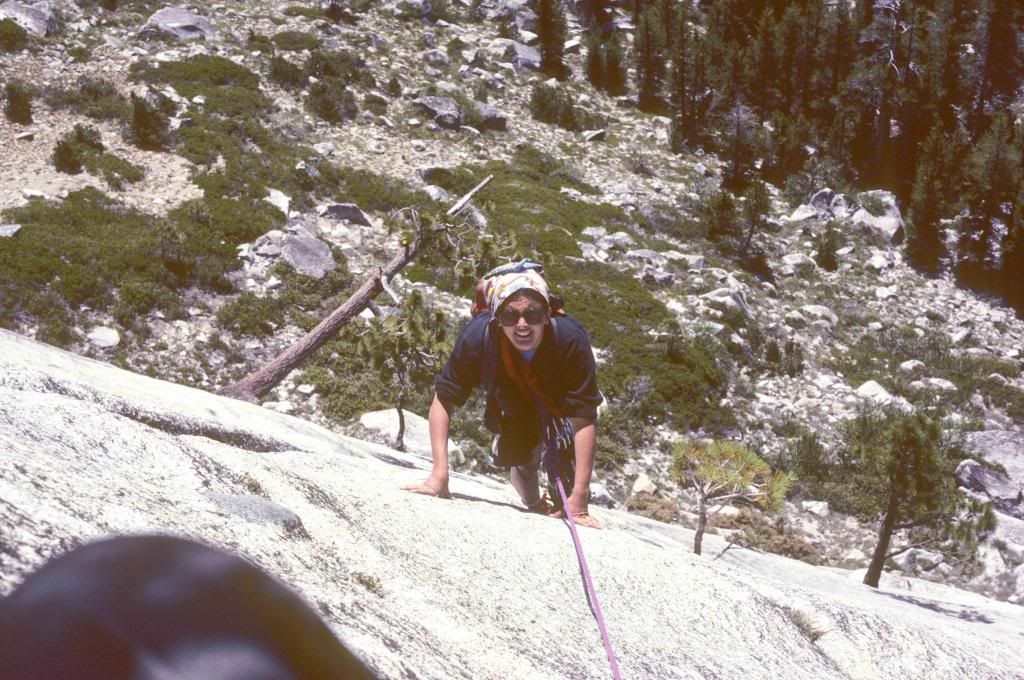
Here’s Gerri Dayharsh, a couple days before, on the first ascent of Crooked Neck.
The heat, even in the morning, convinced us to take a swim in the large granite, bathtub-like pool in the side creek, that later drops into Helm’s Creek.
In 2013, trying to remember the first ascent we did, I thought of the few comments I’d heard after the route, was done, “looks, scary,” “wasn’t sure if I could find it”, and “climbed a route next to it and couldn’t see any pro.” Should we be terrified repeating it or would it be no big deal? I had tried to scare off beginning leaders by mentioning run outs on the first four or five pitches. With little climbing outside over the last several years due to several minor injuries, would I want to repeat the route?
After the 1982 swim, by the time Gerri and I got to the base of the route, following large white dikes in from the right to left, to three or four holes in the dikes, it was late morning.
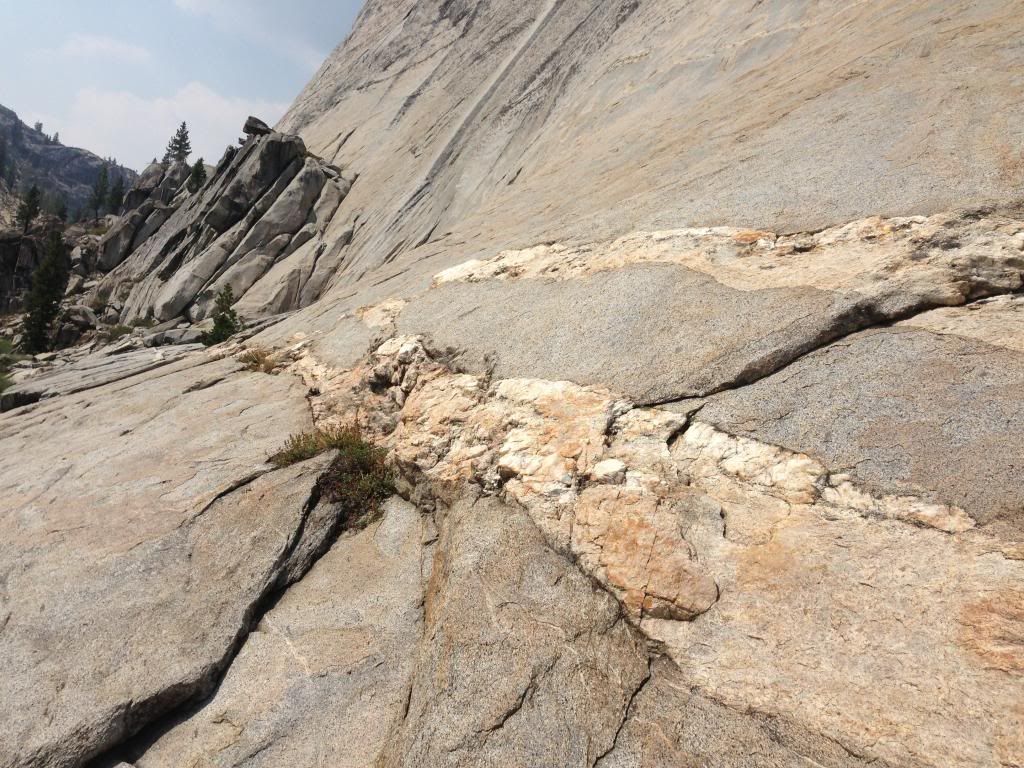
White dikes.
Above us we could see maybe 500 feet of face climbing, followed by 200-400 feet of more climbing.
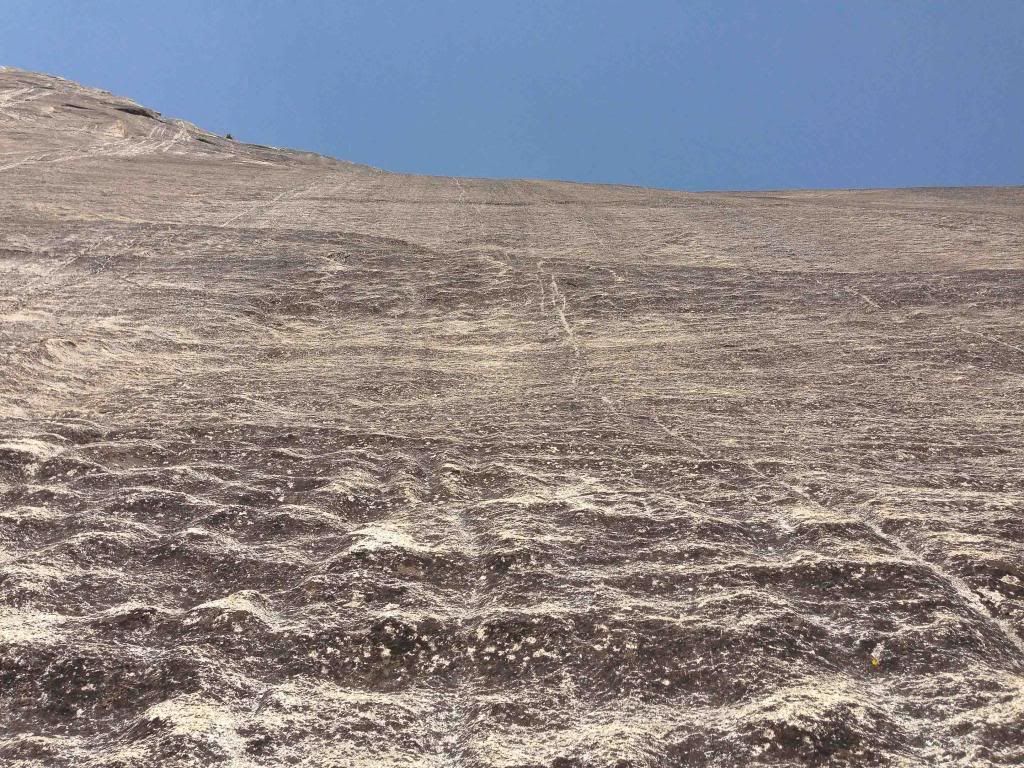
Because one can only hand drill so many holes in solid granite in one day, I can’t imagine I took more than 8-15 bolts. Some people stop for the day after drilling three, two, or only one bolt hole. Aren’t you going to put in a bolt? Gerri asked when I as about 100’ from the belay. “Soon,” I said, and stopped at about 110’ up, just after an interesting move, but before a 5.8 move. From there I ran it out to a ledge where I placed the second and third bolts to make an anchor. Gerri climbed up smoothly and I set out on the second pitch, which started with some 5.6. 5.7, or 5.8 moves…depends on which way you go, I think - I can’t remember. Much of the granite on the west (Main) face of Power Dome seems featured with horizontal holds as if the face is one wide, but barely eroded into the rock, water streak. My naming it Power Dome (after the power project) was a misnomer as far as the climbing that was needed. It usually requires more delicate than powerful moves.
Continuing on the second pitch, the features were close enough together that the climbing became easier throughout the pitch. I finished the short pitch and placed the fourth and fifth bolts as anchors, then brought Gerri up.
Steep ground lay ahead. Looking up at it in 2013, Jacob said, “What were your thoughts, heading up onto that steep unknown section with only a bolt kit and nobody else around? That was kind of out there.”
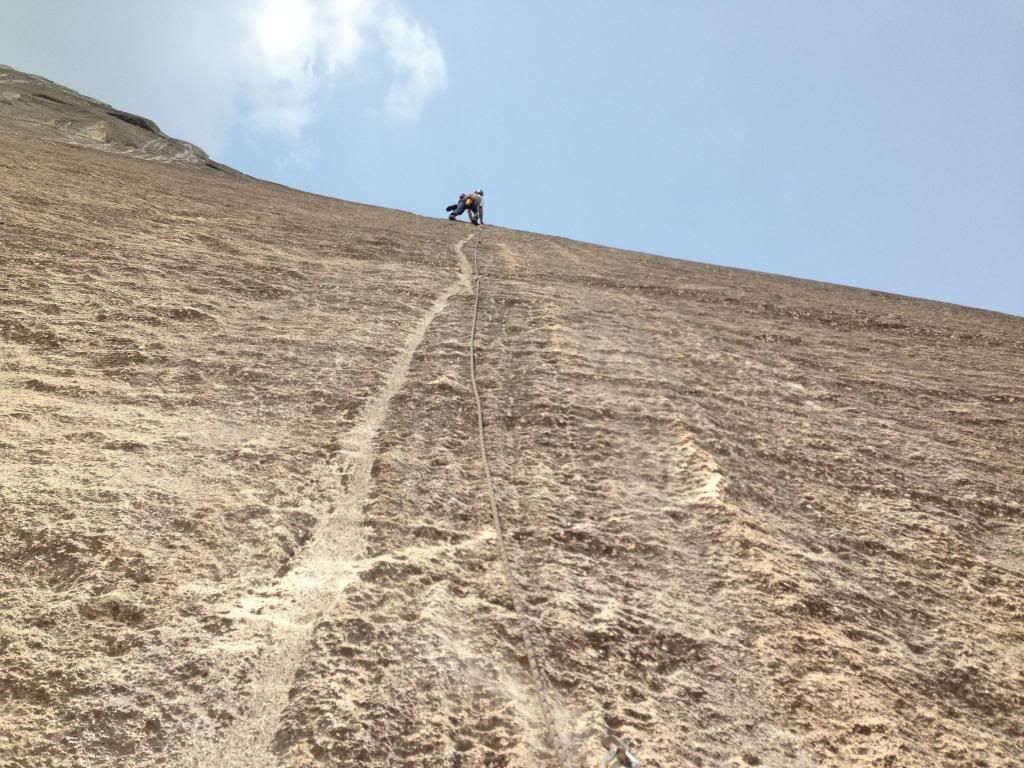
It’s true we didn’t see another soul all day. Gerri had led two pitches of 5.9 and one of 5.10 in her life, but hadn’t had any rescue training. I must have felt ok, because I ascended the steep section for 25’ straight up from the belay, where a fall would mean hitting my belayer half way through a fifty foot fall. I just remember enjoying the climbing. A semi-comfortable stance allowed me to place a bolt and go another 15 feet to where I exclaimed about a hole in the rock. Perfect for a stopper, I saved having to drill; I am stoked. Fifteen feet later, I drill and then run it out 60-80’ to the belay. I place a very solid piton and three sketchy nuts.
With uncharacteristically no breeze, we are cooking and decide Solar Energy will be the name of the climb. We try to race through the final four pitches to the summit thinking about shade and water.
In 2013, it is time to replace the seven bolts, but Jacob Miller points out that the topo I drew shows runouts on the first four pitches and X ratings on some. And only four or so pieces of protection in 450-500 feet of climbing, not counting the three belay anchors. At the time in ’82 it didn’t seem that bad and in terms of difficulty, it was one of the technically easiest of the routes I reported to guidebook authors.
Jacob and I tension traverse out, guessing where the third belay will be. Second time’s a charm and we see it, though it is a long way out to the third anchor.
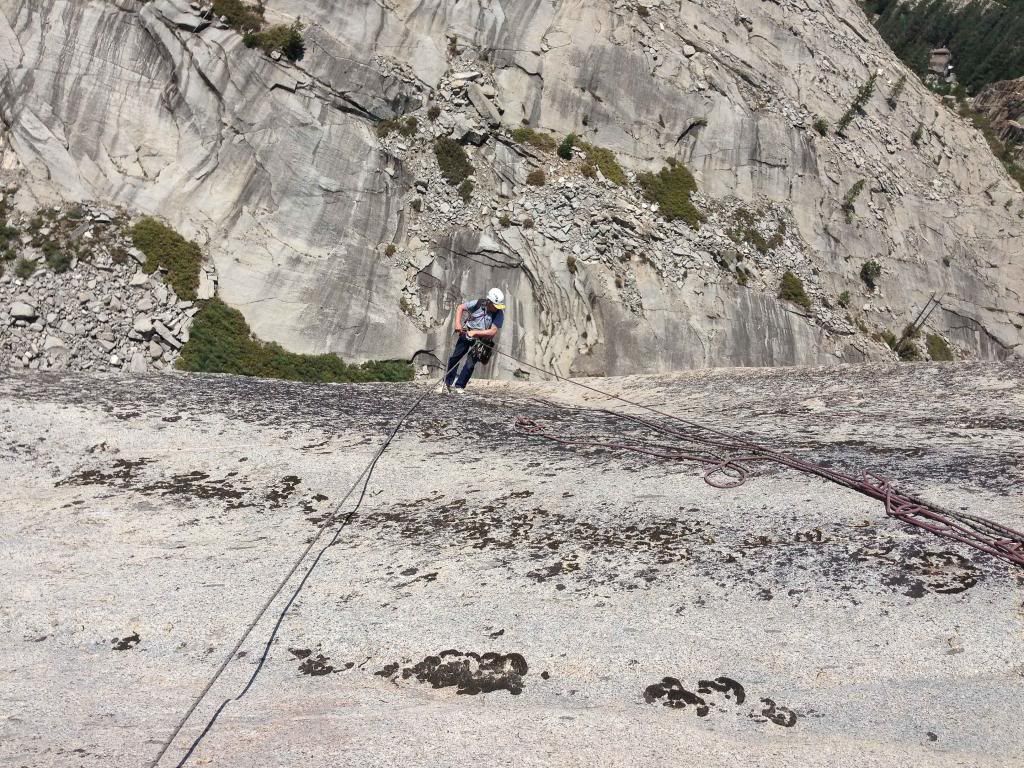
However, the piton is gone, probably to a souvenir hunter. I replace the missing pin anchor with two solid bolts. We start to psyche ourselves out about re-climbing the route, due to the steepness and runouts. Taking out my old, supposedly decrepit bolts is the most difficult thing I do. We pull the ropes, committing to redoing the route and Jacob learns removal and replacement of bolts.
Helms Creek is tantalizingly close at the base, but it would take too much time to reach. Jacob heads up, places two lousy pieces, one of which comes out immediately. One hundred or more feet out from the belay, Jacob cautiously does what seems to him to be the hardest move on the route, taking him up to the first bolt.

Just before the first bolt.
I had offered him the bolt kit and almost encouraged him to put in a bolt 10, 20 or 30 feet below that, but he didn’t want it. Above the bolt, he confidently runs it out to the anchors. The second pitch is short, but easy enough that zero protection is not a big problem. I go out right, up, and then back left.
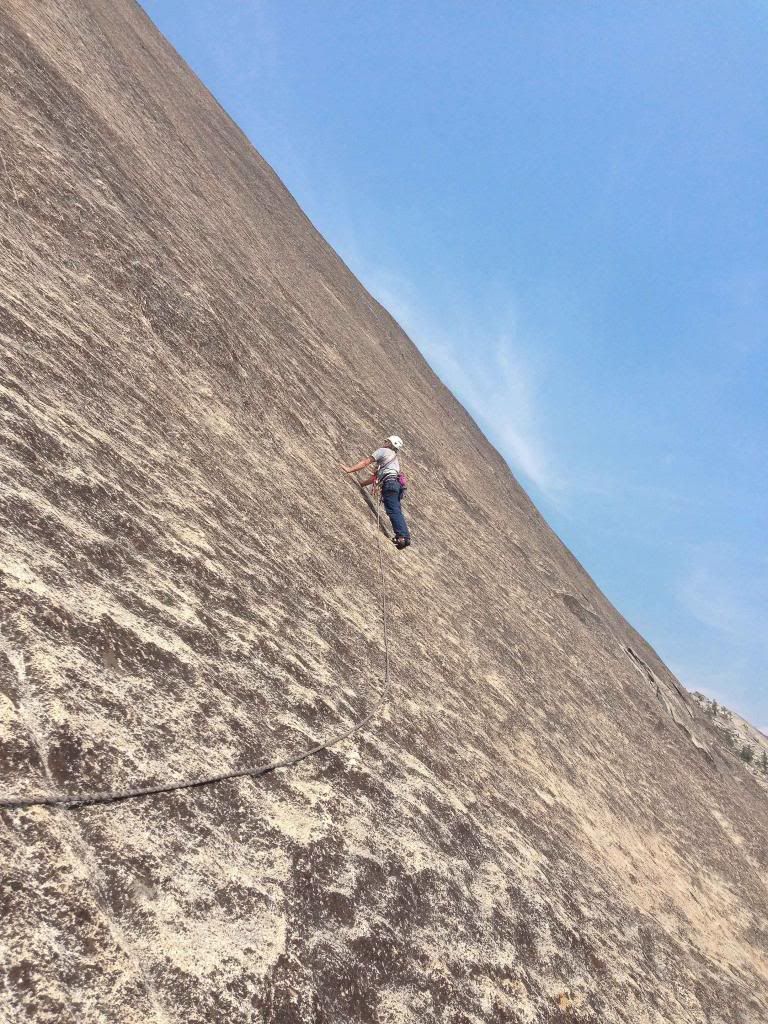
Starting the runout on the second pitch.
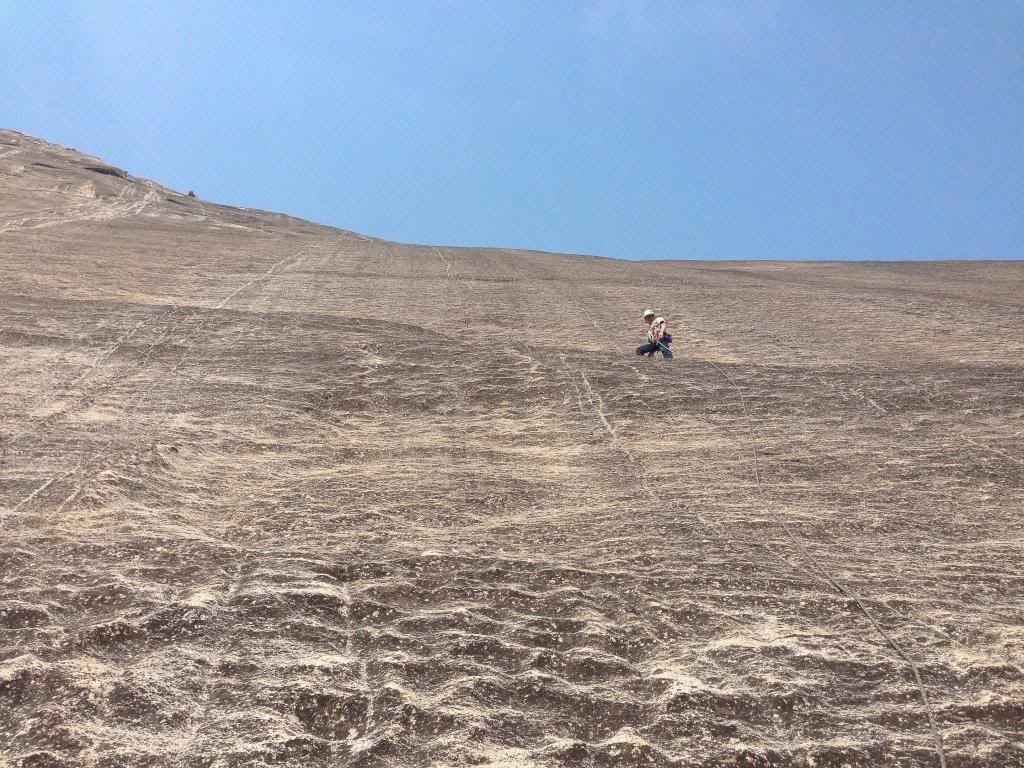
End of the second pitch.
The base of the third and Jacob’s next lead looks very intimidating.

Power Dome’s edges, pockets, and occasional holes are still there, so he floats up the pitch, extolling the quality of the climbing.
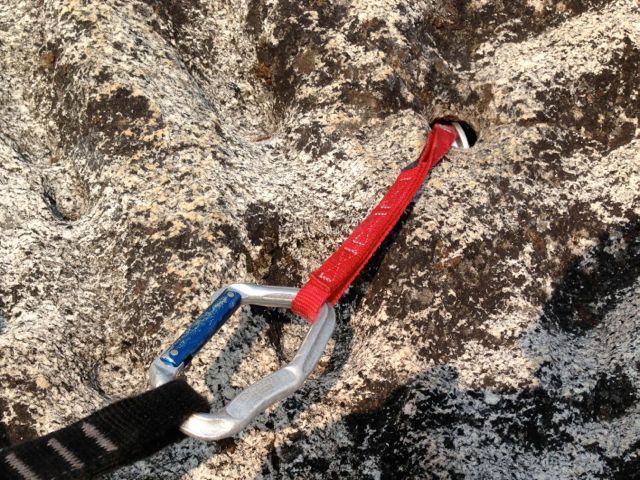
Pocket for a very welcome stopper or red tri-cam on the third pitch.
Twenty or thirty feet up the fourth pitch we discover a bolt that someone added for pro or as an anchor, perhaps after the piton was taken. It does help protect the ramp.
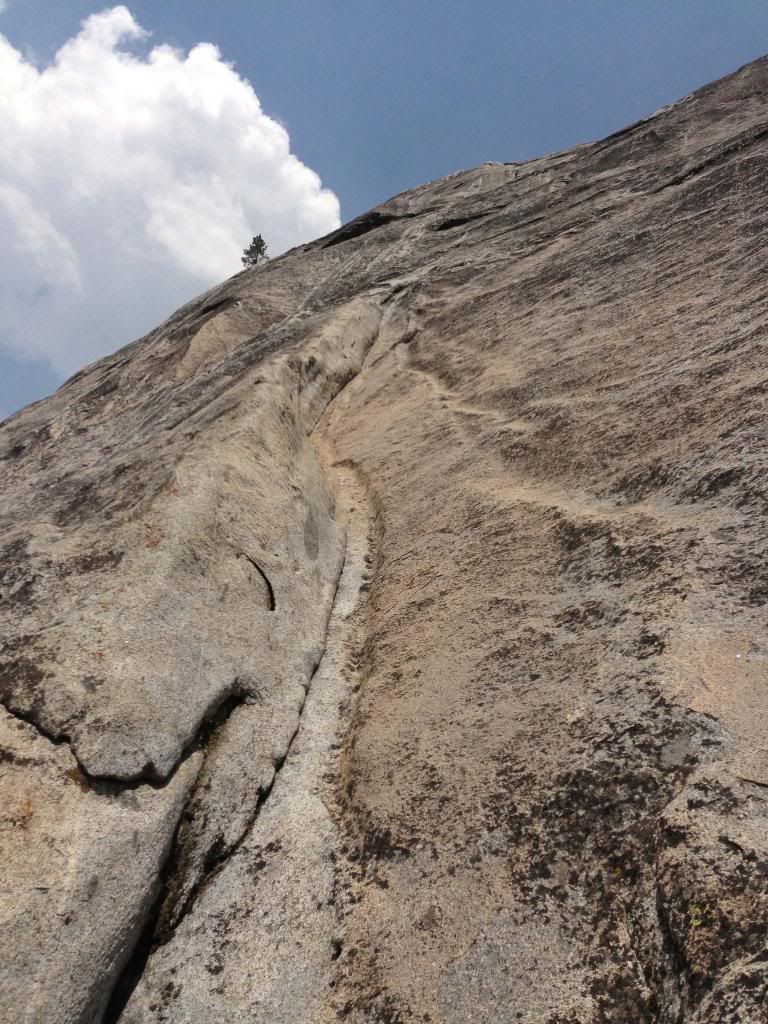
Fourth pitch.
From the fifth belay, I traverse a full pitch down and right to get our water and then rejoin the route by re-climbing the run out face traverse. A few more pitches of moderate climbing up face, corners and water streaks brings us to the summit before sunset. The length and difficulty remind us of Fairview Dome, but the run-outs make us think that leaders should be very confident on 5.7 and 5.8 and probably at least comfortable leading easy 10s.
Gerri and I had gone out perhaps more boldly than we should have in 1982, but luckily, the rock cooperated, producing holds where needed. Jacob and I, after starting to psyche ourselves out, let my memories of the climb win out over the cautions that I had given to others, that when repeated back to us (like a game of “telephone”) had started to sound pretty scary. We had a great, though thirsty, time.
Summary: July 24, 2013. Repeat of Solar Energy. 5.8 X (or 5.9). All original bolts placed on lead, on stance. All seven bolts replaced. Two bolts replace a missing piton anchor at third anchor. One new bolt discovered on the fourth pitch.
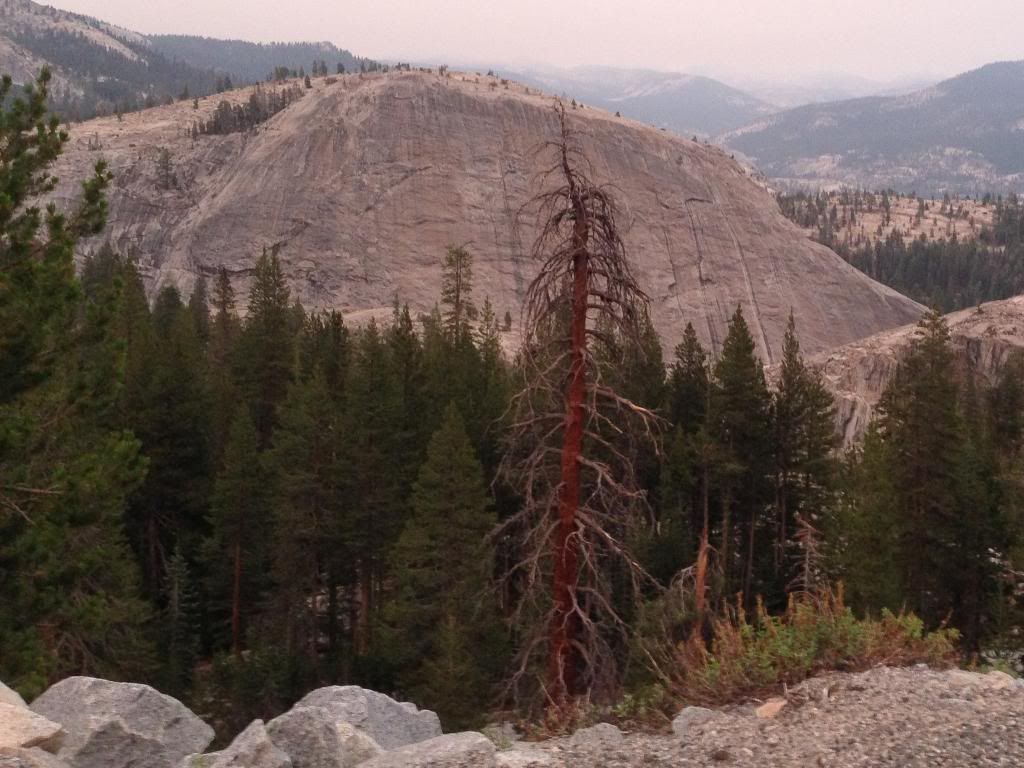
The climb takes a line on the right hand side of the dome. The lower portion is not visible in the photo.
